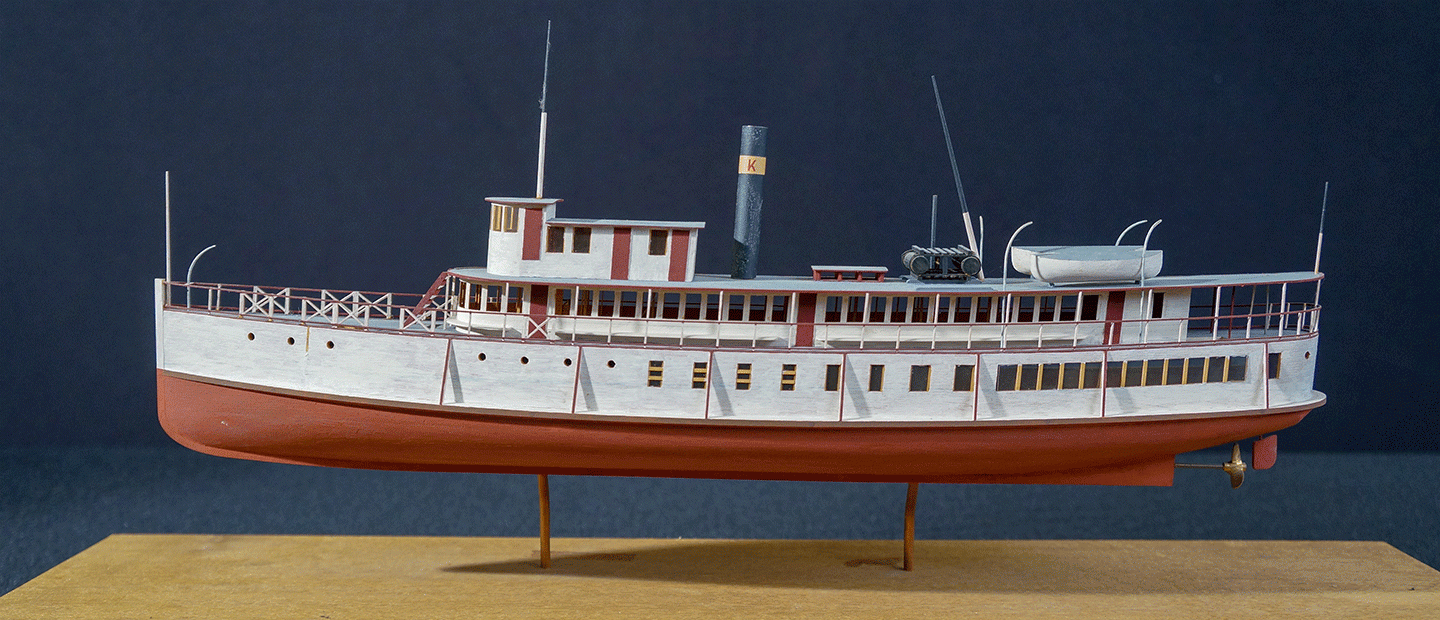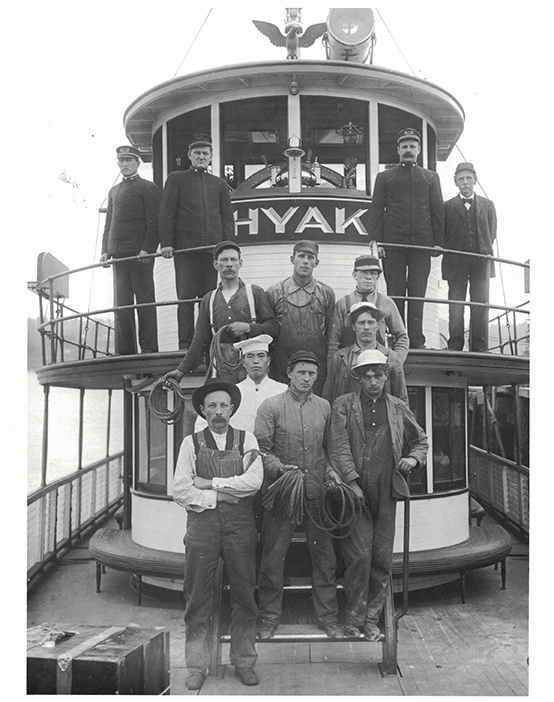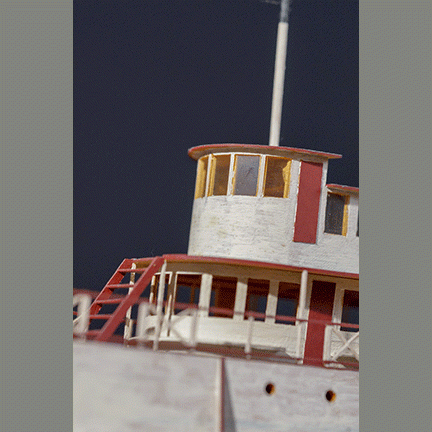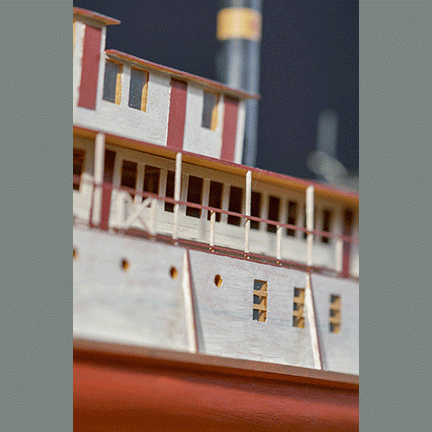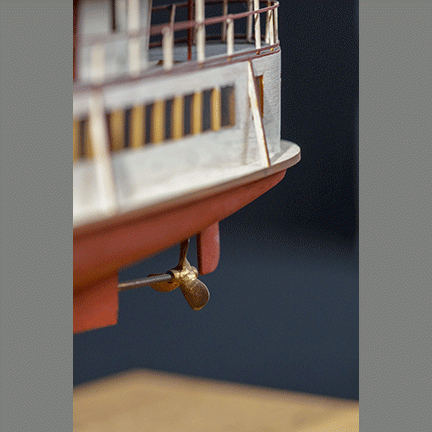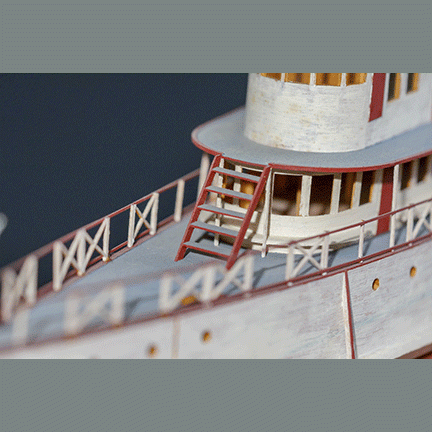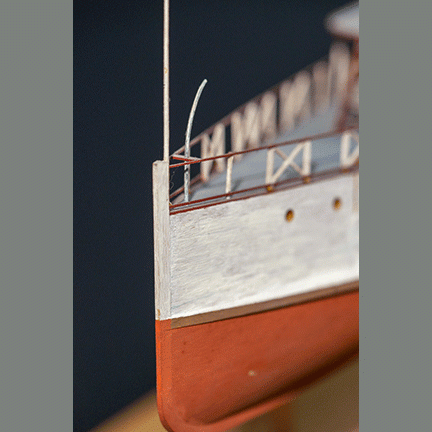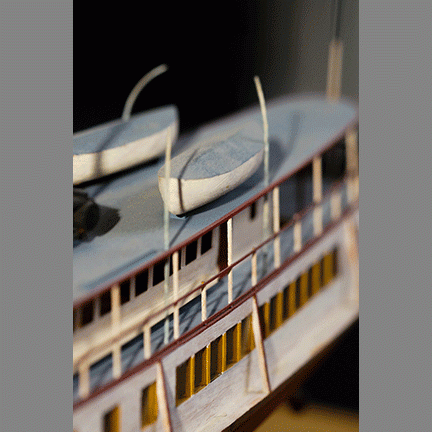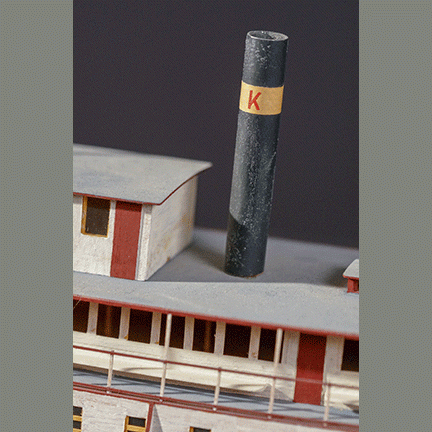History of the model Hyak
“The 1956 Mosquito Fleet Exhibit” Article from The Sea Chest March 1998, text by Ralph C. Hitchcock
“I was aquainted with ship model builder Alan Saunders who agreed to build a model of the steamer Hyak for the exhibit. Occasionally he was contacted about the progress on the model, resulting in the feeling that it was going to be ‘nip and tuck’ to get it completed in time for the exhibit. It was a photo finish –a day before the opening date the model was delivered with one side unpainted. It looked very fine in a one-sided showcase, with only the painted side showing.”
Excerpts from “Bill Somers’ Days on Hyak – As Both a Deckhand and Able Seaman” Retold by Captain Ed Shields and Ellen Jordal in June 2002, PSMHS, The Sea Chest
This article contains reflections of Bill Somers, who worked on the S.S. Hyak during his summers while attending the University of Washington. The route was between Poulsbo and Seattle, over the years of 1929 to 1932. The article describes the boat and what life was like living on the Hyak as part of the crew.
“…Hyak had three decks: the lower was the freight and engine room, the middle was the passenger deck and on top was the boat deck. The pilot house sat on top of the boat deck, with the wheel house three steps higher. Behind and attached was the remainder of the structure, housing staterooms for the captain, mate, and purser on the boat deck level.”
“…Hyak’s passenger cabin was somewhat like a present-day airplane cabin. An aisle extended down the center, with two high-back leather chairs on each side. Further aft there were the wood seats or benches. On the after-end of the lower or freight deck, just abaft the engine room, was the men’s smoking room. It was here that the male commuters played cards on the crossing. Hyak’s whistle had a most melodious tone, produced by a combination of three separate whistles.”
“Life on Hyak was a full-time job. Bill Somers and many of the crew members lived and slept on the vessel. Hyak was moored every night at Poulsbo, and after all the passengers and freight had been off-loaded, the crew could go ‘uptown’ for a walk or to take in the movie show before retiring for the night.”
“Freight would include all the groceries for the stores, sacked coal, feed for dairy and chicken farmers, building supplies, and other miscellaneous items…Fresh meat for the butcher, flour, hardware, and more came to West Sound stores…Hyak had the mail contract, and the sacks needed to be delievered to each post office.”
“There were many periods in the summer with extreme low tides in the middle of the day. At these times, Hyak did not have sufficient depth of water at the Poulsbo short warehouse docks. When this occurred, the steamer waited until high tide (sometimes after all the passengers had departed). At other times these moves were made in the middle of the night, around 2 A.M. This was considered normal working hours, and no overtime was expected.”
“The fare tariff allowed passengers to carry on board whatever they could carry in their arms, without charge. There was an extra charge for more packages. On Saturdays the purser would be ‘looking elsewhere,’ and some passengers made several trips across the gangplank with all they could carry–at no extra cost.”
Note: Formal crew portrait of the new steamer Hyak in 1909. Note the eagle on the pilot house. A trophy earned for speed. Top (first) row: Mate. Chief Engineer, Ole Hanson. Capt. Alf Hostmark. Second row: Deckhand. Fireman. Martin Rannum, Cabin Boy. Third row: Cook. Deckhand. Fourth row: Unknown. Deckhand. Ole Tanseros, Deckhand and future captain.
Model:
Title: Hyak
Year: 1956
Vessel type: Passenger Ferry
Propulsion: Steamship
Material: Wood, only one side completed
Dimensions: H-22.8”, W-10”, L-26”
Photography by: C. Slettebak-Rood

